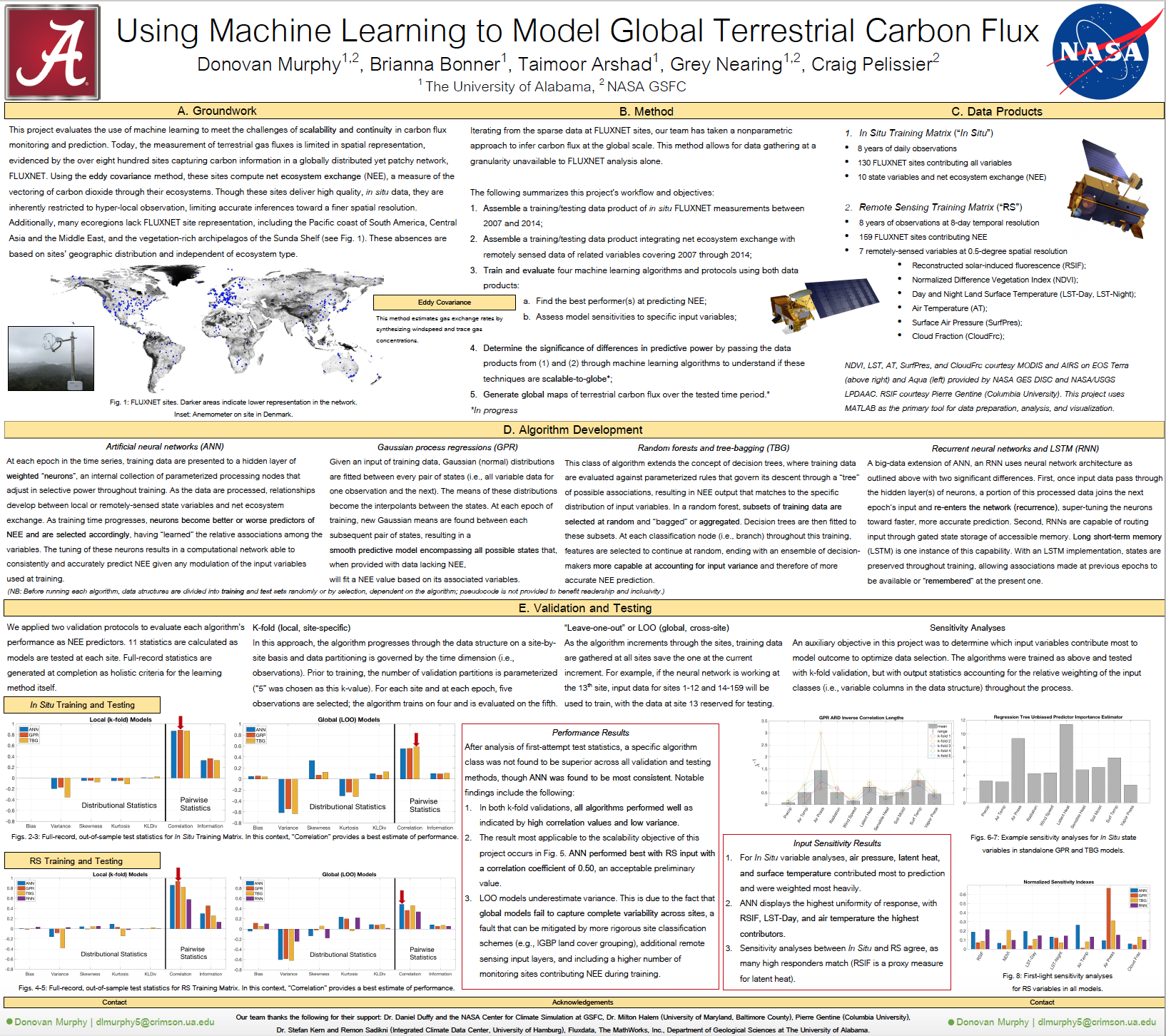Using Machine Learning to Model Global Terrestrial Carbon Flux
Donovan Murphy
Abstract
This project evaluates the use of machine learning to meet the challenges of scalability and continuity in carbon flux monitoring and prediction. Today, the measurement of terrestrial gas fluxes is limited in spatial representation, evidenced by the over eight hundred sites capturing carbon information in a globally distributed yet patchy network, FLUXNET. Using the eddy covariance method, these sites compute net ecosystem exchange (NEE), a measure of the vectoring of carbon dioxide through their ecosystems. Though these sites deliver high quality, in situ data, they are inherently restricted to hyper-local observation, limiting accurate inferences toward a finer spatial resolution. Additionally, many ecoregions lack FLUXNET site representation, including the Pacific coast of South America, Central Asia and the Middle East, and the vegetation-rich archipelagos of the Sunda Shelf (see Fig. 1). These absences are based on sites’ geographic distribution and independent of ecosystem type.



